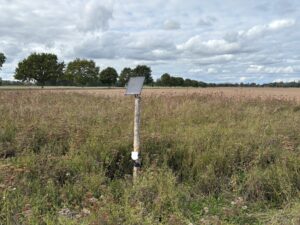Limiting global warming to 1.5°C could halve land ice contribution to sea-level rise this century, according to researchers at King’s College London.
The study, which is published in the journal Nature, uses a large number of computer models combined with statistical techniques to combine all sources of land ice into a more complete picture that predicts the likelihood of different levels of sea-level rise.
Glaciers and ice sheets are currently responsible for around half of the global sea-level rise.
However, the researchers predict that if we limit global warming to 1.5°C, Greenland ice sheet losses would reduce by 70% and glacier losses by half, compared with current emissions pledges.
These findings will inform the Intergovernmental Panel on Climate Change’s Sixth Assessment report which will be published later this year.
Dr Tasmin Edwards, director of the King’s Climate Hub, said: ‘Ahead of COP26 this November, many nations are updating their pledges to reduce greenhouse gas emissions under the Paris Agreement.
‘Global sea level will continue to rise, even if we halt all emissions now, but our research suggests we could limit the damage: if pledges were far more ambitious, central predictions for the sea-level rise from melting ice would be reduced from 25 cm to 13 cm in 2100, with a 95% chance of being less than 28 cm rather than the current upper end of 40 cm. This would mean a less severe increase in coastal flooding.
‘We used a larger and more sophisticated set of climate and ice models than ever before, combining nearly 900 simulations from 38 international groups using statistical techniques to improve our understanding of uncertainty about the future. Antarctica is the ‘wildcard’ of sea-level rise: difficult to predict, and critical for the upper end of projections. In a pessimistic storyline, where Antarctica is very sensitive to climate change, we found there is a 5% chance of the land ice contribution to sea-level rise exceeding 56 cm in 2100 even if we limit warming to 1.5°C.
‘Coastal flood management must therefore be flexible enough to account for a wide range of possible sea-level rise, until new observations and modelling can improve the clarity of Antarctica’s future.’
Photo Credit – Pixabay















